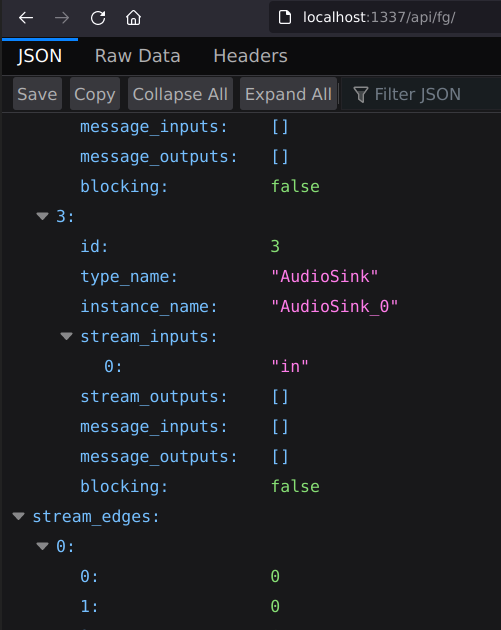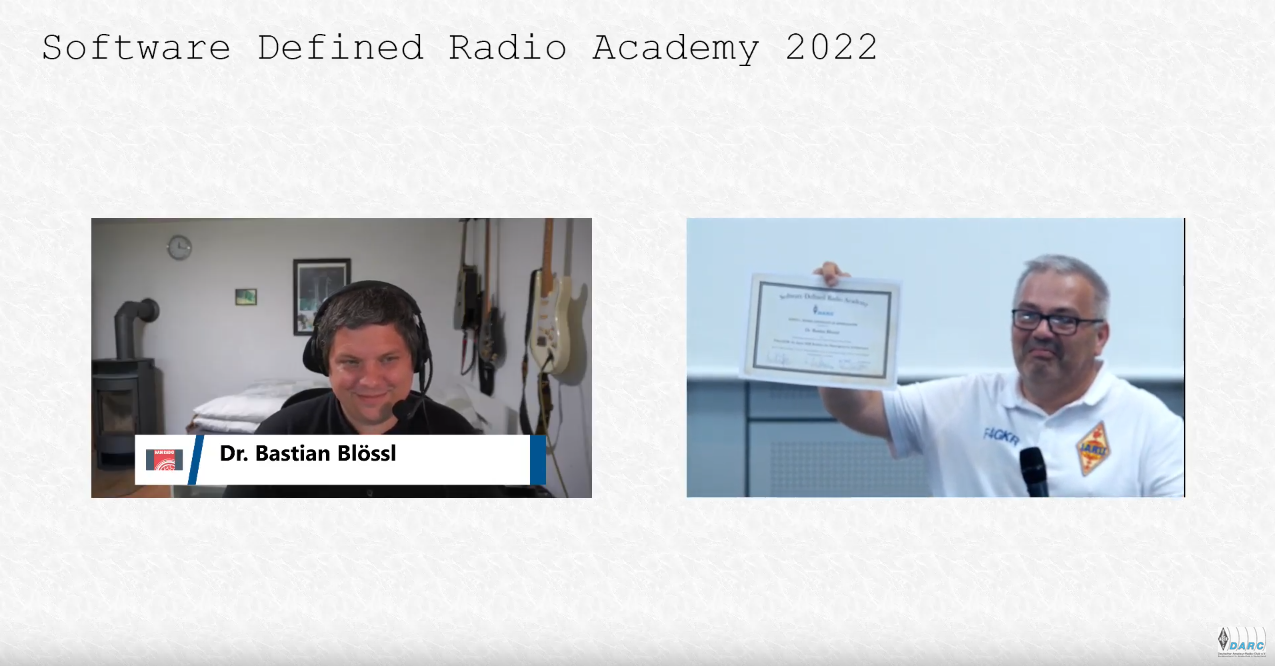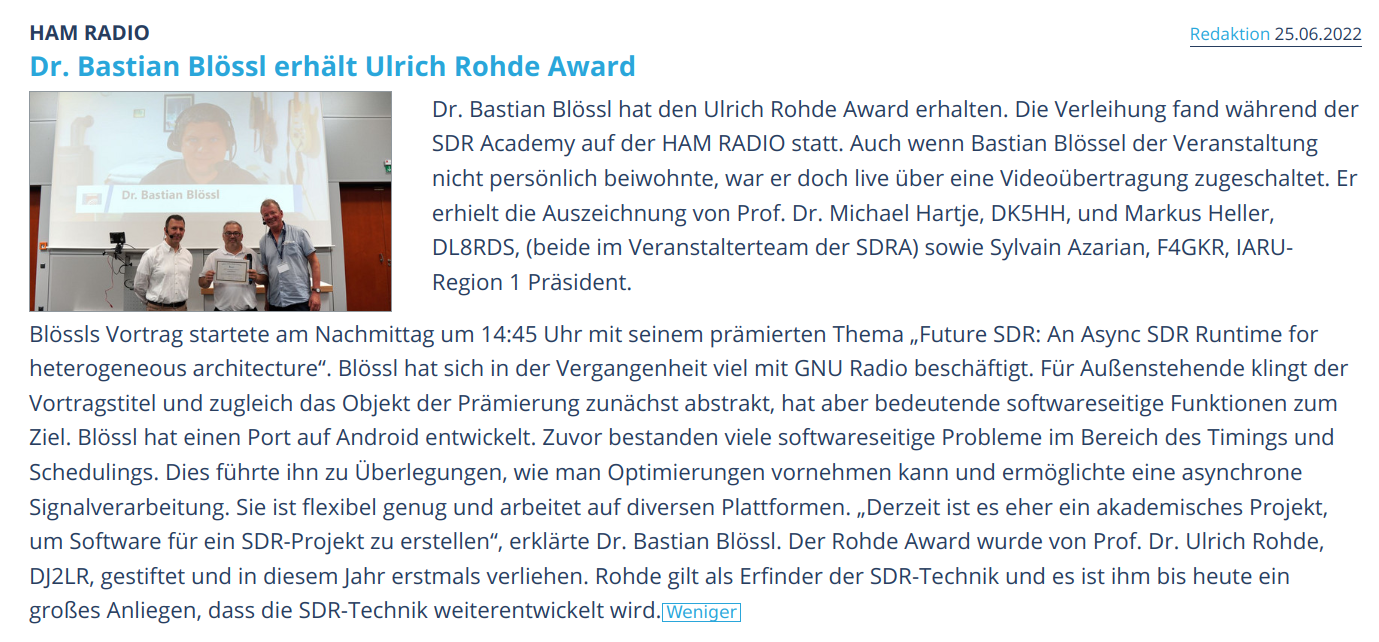2022-10-03
We finally entered the
proc_macro game
for some advanced syntactic sugaring :-) The macros are still experimental but
already fun to use.
At the moment, we support two macros; one for connecting the flowgraph and one
for implementing message handlers.
Connect Macro
The connect! macro serves two purposes. It adds blocks to the flowgraph and it
allows to connect them.
This makes the code quite a bit cleaner. Compare, for example:
fn main() -> Result<()> {
let mut fg = Flowgraph::new();
let src = NullSource::<u8>::new();
let head = Head::<u8>::new(123);
let snk = NullSink::<u8>::new();
let src = fg.add_block(src);
let head = fg.add_block(head);
let snk = fg.add_block(snk);
fg.connect_stream(src, "out", head, "in")?;
fg.connect_stream(head, "out", snk, "in")?;
Runtime::new().run(fg)?;
Ok(())
}
with
fn main() -> Result<()> {
let mut fg = Flowgraph::new();
let src = NullSource::<u8>::new();
let head = Head::<u8>::new(123);
let snk = NullSink::<u8>::new();
connect!(fg, src > head > snk);
Runtime::new().run(fg)?;
Ok(())
}
The macro uses > to indicate stream connections and | to indicate message
connections.
connect!(fg, stream_source > stream_sink);
connect!(fg, message_source | message_sink);
If the port connections are not the default "in" and "out", they can be put
explicitly.
connect!(fg, src.out > snk.in);
While it is uncommon, a port might have a space in its name. This can be solved
by quoting the port name.
connect!(fg, src."output port" > snk.in);
If a port has no input or output ports that have to be connected, it can just be
put on a line on its own, which just adds it to the flowgraph.
connect!(fg, dummy_block);
As shown in the example, blocks can also be chained.
connect!(fg, src > head > snk);
And, finally, more complex topologies can be set up with multiple lines.
connect!(fg,
src > fwd;
fwd > snk;
msg_src | msg_snk;
);
The idea and initial implementation of the connect! macro was by Loïc
Fejoz. Thank you!
Message Handlers
Handlers for message ports are, at the moment, quite ugly. This is mainly due to
current limitations of Rust’s async functions that will hopefully be overcome
in the future.
Assume you want to implement a block with a handler my_handler.
pub fn new() -> Block {
Block::new(
BlockMetaBuilder::new("MyBlock").build(),
StreamIoBuilder::new().build(),
MessageIoBuilder::new()
.add_input("handler", Self::my_handler)
.build(),
Self,
)
}
Using the #[message_handler] attribute macro, one can implement the handler
with:
#[message_handler]
async fn my_handler(
&mut self,
_mio: &mut MessageIo<Self>,
_meta: &mut BlockMeta,
_p: Pmt,
) -> Result<Pmt> {
Ok(Pmt::Null)
}
Which is much more what one would expect, compared to the dynamically generated
and boxed-up async block that it actually is under the hood.
All of this is still experimental, but it’s amazing what is possible with proc macros.
If you want to see a complete example, we added
one
to the project.
Please give it a try and let us know what you think :-)
 David Volz, Andreas Koch and Bastian Bloessl, "Software-Defined Wireless Communication Systems for Heterogeneous Architectures," Proceedings of 29th Annual International Conference on Mobile Computing and Networking (MobiCom 2023), Demo Session, Madrid, Spain, October 2023.
[DOI, BibTeX, PDF and Details...]
David Volz, Andreas Koch and Bastian Bloessl, "Software-Defined Wireless Communication Systems for Heterogeneous Architectures," Proceedings of 29th Annual International Conference on Mobile Computing and Networking (MobiCom 2023), Demo Session, Madrid, Spain, October 2023.
[DOI, BibTeX, PDF and Details...]





